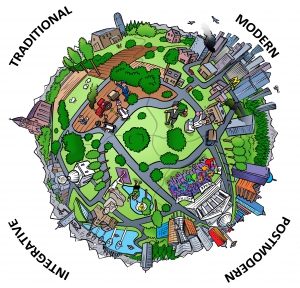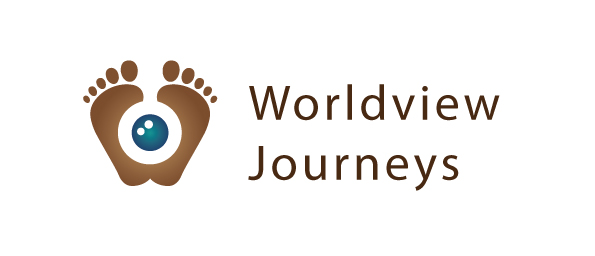Before you read about your worldview, it’s good to realize this description is based in generalizations of the complexities of reality. These worldviews can best be seen as archetypes or ideal-types: models of recurring patterns or structures.
They cannot tell you what your unique worldview exactly is like. But they can point you in a direction, and outline a way of thinking, a framework of meaning that you may operate from, even though you may not have thought much about it.
These descriptions can therefore help us think about how we view life, nature, our fellow human beings, and ourselves. They can help us explore why we think the way we think. Knowing more about other people’s worldviews may also give us more understanding for people who think differently.
Traditional worldviews
People with traditional worldviews primarily identify with their particular group, often based on their family of origin, religion, ideology, and/or nation. The traditional worldview is thus oriented towards the community rather than the individual. It emphasizes sacrifice of self for the greater good, which tends to be connected with a transcendent purpose or higher calling.
Traditional worldviews often emerged as response to brutal or chaotic life conditions in which egocentrism dominated. This worldview therefore brings a sense of order, group loyalty, and higher purpose. It supports people to see beyond their self-interests and take the perspective of others. Taking care of each other is more important than ‘making it for yourself’. Values like security, solidarity, honesty, decency, modesty, conformity, and service are central. Its inherently social nature is one of the greatest strengths of this worldview.
Knowledge
In the quest for truth, traditionals look at the past rather than the future. They often rely on longstanding conventions, revelations, and dogmas, and trust traditional or religious authorities. This worldview is frequently, though not always, religious in nature, with an emphasis on a literal reading of scriptures and doctrines.
Reality
The traditional view on the nature of reality tends to be theistic as well as dualistic ~ with a central belief in a Supreme, divine being, who miraculously created the world, yet is above and beyond that world, rather than in it. While nature is considered god-created, it is seen as fundamentally different from humans (whom are created in God’s image). The relationship with nature is often understood in terms of ‘dominion’ or ‘stewardship’: humans can use nature for their own purposes, but also have to take care of it.
Identity and values
Traditionals gain a sense of meaning and self-worth through their convictions and their contribution to their community. Family, faith, tradition, and service to their community or a sense of a higher calling are often important. By adapting and conforming to their group’s norms, they fulfil their needs for acceptance and achievement. There’s an emphasis on law and order. Social roles and rules prescribe how to be, stressing discipline, productivity, and conformity. There is often a black-or-white sense of right and wrong.
Society
As so often, this worldview’s greatest strength is also its greatest pitfall. The strong identification with the ‘in-group’ runs the risk of becoming ethnocentric – considering our group best, and better than other groups, the ‘out-groups’. This can become ‘us against them’. It can also result in a sense of coercion, where people don’t get to belong when they don’t believe “the right” things, or behave in “the right” way. At the same time, the traditional worldview offers many vitally important qualities to the whole, including genuine care for others, a sense of discipline, self-restraint, and order, and a dedication to something bigger or higher.

In this image, the traditional worldview is symbolized by the presence of the church, the agrarian landscape and lifestyle, and the religious figures. The policeman symbolizes a respect for authority and tradition, obedience and discipline, law and order.
Want to learn more about the other worldviews? Read up about the modern worldview, the postmodern worldview, and the integrative worldview.
Learn more about the research in which the worldview-test was developed, here.
